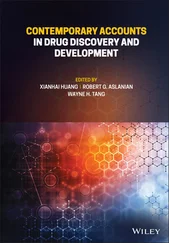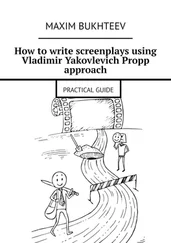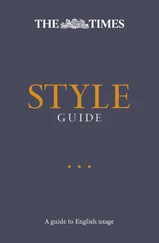Derek Offord - Using Russian - A Guide to Contemporary Usage
Здесь есть возможность читать онлайн «Derek Offord - Using Russian - A Guide to Contemporary Usage» весь текст электронной книги совершенно бесплатно (целиком полную версию без сокращений). В некоторых случаях можно слушать аудио, скачать через торрент в формате fb2 и присутствует краткое содержание. Год выпуска: 2005, Издательство: Cambridge, Жанр: Языкознание, на английском языке. Описание произведения, (предисловие) а так же отзывы посетителей доступны на портале библиотеки ЛибКат.
- Название:Using Russian : A Guide to Contemporary Usage
- Автор:
- Издательство:Cambridge
- Жанр:
- Год:2005
- ISBN:нет данных
- Рейтинг книги:4 / 5. Голосов: 1
-
Избранное:Добавить в избранное
- Отзывы:
-
Ваша оценка:
- 80
- 1
- 2
- 3
- 4
- 5
Using Russian : A Guide to Contemporary Usage: краткое содержание, описание и аннотация
Предлагаем к чтению аннотацию, описание, краткое содержание или предисловие (зависит от того, что написал сам автор книги «Using Russian : A Guide to Contemporary Usage»). Если вы не нашли необходимую информацию о книге — напишите в комментариях, мы постараемся отыскать её.
Using Russian : A Guide to Contemporary Usage — читать онлайн бесплатно полную книгу (весь текст) целиком
Ниже представлен текст книги, разбитый по страницам. Система сохранения места последней прочитанной страницы, позволяет с удобством читать онлайн бесплатно книгу «Using Russian : A Guide to Contemporary Usage», без необходимости каждый раз заново искать на чём Вы остановились. Поставьте закладку, и сможете в любой момент перейти на страницу, на которой закончили чтение.
Интервал:
Закладка:
7.15 Compliments…
7.16 Telephone conversations…
7.17 Letter writing…
8 Word-formation
8.1 Principles of word-formation
8.2 Types of consonant, spelling rules and consonant changes
8.2.1 Hard and soft consonants
8.2.2 Use of the hard sign
8.2.3 Devoicing of consonants
8.2.4 Spelling rules
8.2.5 Consonant changes
8.2.6 Epenthetic…
8.3 Verbal prefixes
8.4 Noun prefixes
8.5 Adjectival prefixes
8.6 The verbal infixes…
8.7 Noun suffixes
8.7.1 The principal noun suffixes
8.7.2 Noun suffixes denoting females
8.7.3 Miscellaneous noun suffixes
8.8 Diminutive, augmentative and expressive suffixes
8.8.1 Diminutive and hypocoristic suffixes
8.8.2 Double diminutive suffixes
8.8.3 The augmentative suffix…
8.8.4 Pejorative suffixes
8.9 The principal adjectival suffixes
8.10 Suffixes of participial origin
8.11 The verbal suffixes…and…
8.12 Composition
8.12.1 Compound nouns
8.12.2 Compound adjectives
9 Inflection
9.1 Declension of the noun
9.1.1 Gender
9.1.2 Basic declensional patterns of the noun
9.1.3 Mobile vowels
9.1.4 Genitive singular forms in…
9.1.5 Locative singular forms in…
9.1.6 Masculine nouns with nominative plural in…
9.1.7 Irregularities in the genitive plural of nouns
9.1.8 Irregularities in dative/instrumental/prepositional plural forms
9.1.9 Nouns which are irregular throughout the plural
9.1.10 Nouns with irregular declension throughout
9.1.11 Declension of surnames
9.1.12 Indeclinable nouns
9.2 Declension of pronouns
9.3 Adjectival forms
9.3.1 Declension of adjectives
9.3.2 Formation of short adjectives
9.3.3 Formation of short comparatives
9.4 Formation of adverbs
9.5 Declension of numerals
9.6 Verb forms
9.6.1 The system of conjugation
9.6.2 1A verbs
9.6.3 1B verbs with vowel stems and unstressed endings
9.6.4 1B verbs with stems in…and p and unstressed endings
9.6.5 1B verbs with vowel stems and stressed endings
9.6.6 1B verbs with consonant stems and unstressed endings
9.6.7 1B verbs with consonant stems and stressed endings
9.6.8 Second-conjugation verbs
9.6.9 Irregular verbs
9.6.10 Formation of the past tense
9.6.11 Formation of the imperative
9.7 Formation of gerunds and participles
9.7.1 Formation of imperfective gerunds
9.7.2 Formation of perfective gerunds
9.7.3 Formation of present active participles
9.7.4 Formation of past active participles
9.7.5 Formation of present passive participles
9.7.6 Formation of past passive participles
10 Prepositions
10.1 Valency of prepositions
10.1.1 Prepositions followed by apparent nominative forms
10.1.2 Prepositions governing the accusative
10.1.3 Prepositions governing the genitive
10.1.4 Prepositions governing the dative
10.1.5 Prepositions governing the instrumental
10.1.6 Prepositions governing the prepositional or locative
10.2 Prepositional phrases based on nouns
10.3 Verbs followed by prepositions
10.3.1 Verbs followed by prepositions governing the accusative
10.3.2 Verbs followed by prepositions governing the genitive
10.3.3 Verbs followed by prepositions governing the dative
10.3.4 Verbs followed by prepositions governing the instrumental
10.3.5 Verbs followed by prepositions governing the prepositional
10.4 Rendering of English prepositions in Russian
11 Syntax
11.1 Use of the cases
11.1.1 Use of the nominative
11.1.2 Use of the accusative
11.1.3 Use of case to denote animate direct object
11.1.4 Basic uses of the genitive
11.1.5 Verbs governing the genitive
11.1.6 Case of direct object after a negated verb
11.1.7 Basic uses of the dative
11.1.8 Verbs governing the dative
11.1.9 Basic uses of the instrumental
11.1.10 Verbs governing the instrumental
11.1.11 Use of the prepositional
11.2 Use of pronouns
11.2.1 Use of…as a relative pronoun
11.2.2 Use of…and…as interrogative pronouns
11.2.3 Use of negative pronouns…
11.2.4 Use of…etc.
11.2.5 Use of the particles…
11.2.6 Use of…
11.3 Use of short adjectives
11.4 Use of numerals
11.4.1 Use of…
11.4.2 Use of numerals higher than one in nominative/accusative
11.4.3 Use of numerals in oblique cases
11.4.4 Use of numerals with animate direct object
11.4.5 Use of collective numerals
11.4.6 Approximation
11.4.7 Agreement of predicate with a subject containing a cardinal numeral
11.4.8 Translation of years and people after numerals
11.4.9 Distributive expressions
11.4.10 Time
11.4.11 Dates
11.4.12 Distance
11.4.13 Nouns expressing number
11.5 Use of aspects
11.5.1 Basic distinction between the aspects
11.5.2 Effect of adverbial modifiers
11.5.3 Use of aspect in the indicative
11.5.4 Use of aspect in the infinitive
11.5.5 Use of aspect in negative constructions
11.5.6 Use of aspect in the imperative
11.6 Problems in choice of tense
11.7 Use of verbs of motion
11.8 Use of reflexive verbs
11.9 The conditional mood
11.10 The subjunctive mood
11.11 Use of gerunds and participles
11.11.1 Use of gerunds
11.11.2 Use of active participles
11.11.3 Use of present passive participles
11.11.4 Use of past passive participles
11.12 Conjunctions
11.12.1 Coordinating conjunctions
11.12.2 Subordinating conjunctions
11.12.3 Subordinating conjunctions used in R1 or R3
11.13 Syntactic features of colloquial speech
11.4 Word order
11.15 Punctuation
11.16 Use of capital letters
12 Stress
12.1 Introductory remarks
12.2 Stress in nouns
12.2.1 Masculine nouns
12.2.1.1 Masculine nouns with fixed stress
12.2.1.2 Masculine nouns with stress on the ending after the initial form
12.2.1.3 Masculine nouns with stem stress in the singular and stress on the ending in the plural
12.2.1.4 Masculine nouns with stress on the ending in gen/dat/instr/prep plural only
12.2.2 Feminine nouns
12.2.2.1 Feminine nouns with fixed stress
12.2.2.2 Feminine nouns with end stress in the singular and stress on preceding syllable in the plural
12.2.2.3 Stress in feminine nouns with pleophonic forms…
12.2.3 Neuter nouns
12.2.3.1 Neuter nouns with fixed stress
12.2.3.2 Disyllabic neuter nouns with end stress in the singular and stem stress in the plural
12.2.3.3 Disyllabic neuter nouns with stem stress in the singular and end stress in the plural
12.2.3.4 Trisyllabic neuter nouns with stress shift
12.2.3.5 Disyllabic neuter nouns in -МЯ
12.2.4 Irregular stress in certain prepositional singular forms
12.2.5 Prepositions that attract stress in certain phrases
12.3 Stress in adjectives
12.4 Stress in verbs
12.4.1 Stress in first-conjugation verbs
12.4.2 Stress in second-conjugation verbs
12.4.2.1 Stress on ending in infinitive and all indicative forms
12.4.2.2 Stress on stem in infinitive and all indicative forms
12.4.2.3 Stress shift from ending to stem after the first person singular
12.4.3 Stress in past-tense forms
12.4.4 Stress in gerunds and participles
12.4.4.1 Imperfective gerunds
12.4.4.2 Perfective gerunds
12.4.4.3 Present active participles
12.4.4.4 Past active participles
12.4.4.5 Present passive participles
12.4.4.6 Past passive participles
12.4.5 Miscellaneous points
12.5 Variation in stress
Читать дальшеИнтервал:
Закладка:
Похожие книги на «Using Russian : A Guide to Contemporary Usage»
Представляем Вашему вниманию похожие книги на «Using Russian : A Guide to Contemporary Usage» списком для выбора. Мы отобрали схожую по названию и смыслу литературу в надежде предоставить читателям больше вариантов отыскать новые, интересные, ещё непрочитанные произведения.
Обсуждение, отзывы о книге «Using Russian : A Guide to Contemporary Usage» и просто собственные мнения читателей. Оставьте ваши комментарии, напишите, что Вы думаете о произведении, его смысле или главных героях. Укажите что конкретно понравилось, а что нет, и почему Вы так считаете.












